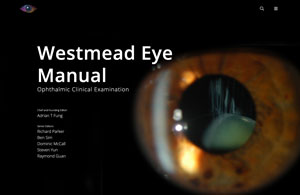16 Vitreomacular Interface Disorders
16.1 Epiretinal Membrane Peel
16.2.1 Macular Hole Repair (Surgical)
16.2.2 Macular Hole Repair (Medical Therapy)
16.3 Vitreomacular Traction Syndrome
16.4 Myopic Traction Maculopathy – Vitrectomy
16.5.1 Myopic Traction Maculopathy – Macular Buckling
16.5.2 Myopic Traction Maculopathy – Macular Buckling (AJL)
16.2.2 Macular Hole Repair (Medical Therapy)
Medical therapy to reduce macular edema can facilitate closure of small full thickness macular holes, thus avoiding the need for surgery.[1] This also provides a means of therapy, when vision may still be good or if patients cannot position or cannot function without the vision in the involved eye.
Macular holes are full thickness defects in the retina from the ILM through the photoreceptor layer and are most commonly due to vitreous traction on the macula unless associated with secondary causes, such as trauma, retinal detachment or myopic retinoschisis. Macular holes are usually treated with surgery to relieve traction and to use intraocular tamponade.
Kokame GT, Johnson MW, Lim J, Flynn HJ, de Carlo T, Yannuzzi N, Ryan EH, Omizo JN, Sridhar J, Staropoli P, Goldhagen B, Lian R. Closure of Full-Thickness Macular Holes Associated with Macular Edema with Medical Therapy. Ophthalmologica 2022; 245:179-186.
Macular holes are often associated with macular edema around the hole. When there is a break in the internal limiting membrane, vitreous fluid enters and the increasing macular edema contributes to macular hole formation.
Macular holes considered for medical therapy are small (usually 200μm or less) and do not have significant traction on the fovea visible on optical coherence tomography.
All rights reserved. No part of this publication which includes all images and diagrams may be reproduced, distributed, or transmitted in any form or by any means, including photocopying, recording, or other electronic or mechanical methods, without the prior written permission of the authors, except in the case of brief quotations embodied in critical reviews and certain other noncommercial uses permitted by copyright law.
Westmead Eye Manual
This invaluable open-source textbook for eye care professionals summarises the steps ophthalmologists need to perform when examining a patient.

